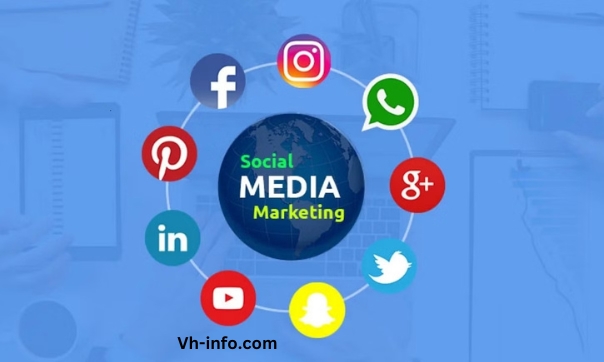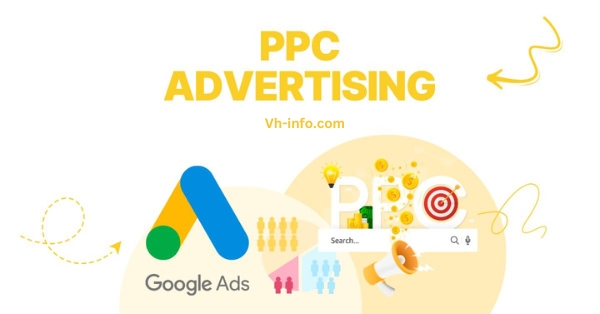Financial services marketing is a unique field that requires specific strategies to be effective. It caters to individuals and businesses seeking financial products and services like loans, insurance, investments, and more.
In this blog post, we will explore the benefits of financial services marketing, who uses it, and its role in the finance industry.
We will also delve into some of the major techniques used in financial services marketing.
Additionally, we have listed 10 strategies you could use for marketing your financial services effectively. With the rise of digitization and data analysis in recent years, we will also look into some trends that are reshaping financial services marketing.
Lastly, we will answer frequently asked questions about financial services marketing to help you understand why it is crucial for your business’s success.
What is Financial Services Marketing?

Financial services marketing involves promoting the products and services offered by banks, financial institutions, and related companies in the financial industry. The main aim is to make people aware of these offerings, attract potential customers, and ultimately drive sales and revenue through ongoing marketing campaigns.
Marketers use a mix of traditional methods like TV and print, as well as digital strategies such as blogs, PPC ads, and social media to connect with a diverse audience. As the world increasingly goes digital, financial organizations are recognizing the importance of online marketing in building relationships with customers and staying competitive in the industry.
Role Of Marketing In Financial Services
Financial marketing is essential for banks and financial institutions. It helps create awareness, attract new customers, and satisfy existing ones. By segmenting and targeting their audience, institutions can tailor their marketing to meet customer needs. Financial marketing also aids in building and maintaining brand reputation through smart branding strategies.
Furthermore, it enables banks to measure and evaluate the effectiveness of their marketing efforts using metrics such as customer acquisition cost and retention.
By continuously improving their marketing strategies, banks can achieve better outcomes over time.
What Are The Benefits Of Financial Services Marketing?

Here are some of the key benefits of financial services marketing:
- Attracting new customers – Marketing raises awareness of your financial products and services, and persuades prospects to consider you over competitors. Effective marketing brings in new business.
- Retaining existing customers – Marketing reinforces the value proposition to current customers so they continue using your services. Things like newsletters, special offers, and loyalty programs help with customer retention.
- Building trust and credibility – Financial services depend heavily on trust. Marketing that provides helpful education and positions your brand as an authority or thought leader can build credibility and trustworthiness.
- Supporting sales efforts – Marketing provides sales teams with more opportunities by putting your brand and offerings on prospects’ radar and driving interest. The sales process is smoother with marketing’s support.
- Generating referrals – Satisfied, happy customers are apt to refer friends and colleagues when your marketing has built engagement and loyalty. Referrals are a powerful growth driver.
- Providing value to customers – Content marketing in particular, such as financial advice, planning tips, explanatory videos, etc. provides value to prospects and customers beyond just promoting your services. It builds goodwill.
Strategies for Financial Service Marketing
Promoting financial services is not like other types of advertising. To come up with the best plans for these services, think about what the organization wants to achieve, who they want to reach, and what resources they have.
Here are 10 ways to run successful marketing campaigns for financial services:
1. Digitization
If you offer digital products, it can be a great way to tell more people about your financial services and get new customers.
For instance, you could make a mobile app that lets customers check their accounts, see their money situation, get help, set up services, or buy things using their phones or tablets.
Going digital not only makes things easier for customers and staff but also keeps important financial info safe.
2. User experience
Making the user experience better means making it simple for people to use a business’s digital stuff. It’s super important to make sure the company’s website, app, and other things online don’t have mistakes.
When you give users a great experience, it helps them see that your financial products and services are top-notch.
3. Social media marketing

Lots of people use social media every day. If you promote your finance services on different social platforms, you can connect with a bunch of people and get them to check out your website, learn more about your business, and maybe even buy something.
Don’t forget to put simple links to email lists, apps, and other money-related tools so customers can easily move from social media to your business.
4. Education
Sharing helpful information with customers is a good way to tell them about your services and make them aware of your brand.
You can write articles, make easy-to-understand pictures (infographics), and create ebooks about common money topics.
This helps customers learn about finance and get to know your business. Answering their questions and giving information can show them why your services are important.
5. Customer support
Find ways to help customers and support them with any problems they might have. Some companies hire people just for this – they answer calls and messages from customers.
If you’re really good at helping customers and fixing technical issues, it shows them that you care about what they need, and they might keep using your services.
6. Data Analysis
Data analysis means looking at a lot of information to learn useful things for the business.
Financial companies can keep an eye on customer data to understand what customers do, what they need, and how they feel.
After that, the marketing team can work with the folks who create the products to fix problems, make services better, and give more value to customers.
7. Customer outreach
Customer outreach means talking to customers and trying to get them more involved. Building a relationship with customers can make more people know about the business, make customers want to stick around, and keep them coming back.
Financial service companies can reach out by offering things like free advice, online sessions, or programs for managing money. They can also stay connected with customers through strategies like email newsletters.
8. Relationship-Building
Besides talking online, financial businesses can also build personal connections with customers. If you’re in marketing, sales, or managing accounts, think about reaching out to customers directly to set up meetings. These meetings could be to answer questions, talk about sales, or just chat about business. Building a relationship with clients can happen during lunch or dinner meetings, at sports games, or other social activities.
Additionally, sharing thought leadership through interviews, white papers, and articles from senior employees can also help establish a strong connection with the audience.
9. Customer Feedback
Getting feedback from customers is really important to know if they’re happy with what a company offers. You can ask them questions through social media, email, or by talking to them directly. This way, you get both opinions and numbers that can help you make ads and other stuff that really matters to customers and grow your customer base, ultimately increasing customer satisfaction.
10. Creative Marketing

Being creative is super important to make your marketing different from other companies. Think about sharing what your business stands for and showing its personality through a specific social goal. Then, tell stories that are full of feelings and power to show how your company is working towards this goal.
Major Finance Marketing Techniques For Financial Services
A marketing agency for financial services helps banks and other money-related companies create and carry out good marketing plans that match their business goals.
Here are some things a financial agency might help with:
Digital Marketing

For financial services, digital marketing means using online tools like social media, email, and SEO to connect with and get the attention of possible customers on the internet.
Content Marketing

A money agency might use content marketing to teach and tell people about financial stuff. They can do this through blog posts, videos, and pictures with information (infographics).
Search engine optimization

SEO (Search Engine Optimization) helps your financial services company stand out online.
By choosing the right words, customers can easily find your website without ads. With a good SEO strategy, your website will appear at the top of search results.
To achieve this, monitor customer behavior, stay updated on finance trends, and analyze competitors’ SEO practices.
Start by selecting relevant keywords using tools like Ahrefs and Semrush. Then, incorporate these keywords into your website’s title, descriptions, and tags for effective marketing.
To improve your website’s visibility on Google, follow these steps:
- Create a sitemap to help search engines navigate your site.
- Sign up for Google Search Console to monitor your website’s performance and identify any issues.
- Consider your website’s domain authority, which is influenced by factors like longevity, popularity, and quality backlinks.
By implementing these strategies, you can enhance your website’s presence in search results.
Event Marketing

In the financial services industry, digital marketing can help connect with potential customers and build strong relationships through events like talks, webinars, and conferences. This fosters customer loyalty.
Email Marketing

Email marketing is a powerful tool for digital marketing. Improve your website and collect email addresses from interested individuals to stay connected.
Use tools like Automizy to send personalized emails that integrate with your client database. Start with welcome emails to make a great first impression and attract new customers.
Then, send newsletters periodically to provide updates and behind-the-scenes insights about your financial services company. Share special deals on products like life insurance or mortgages, and inform them about new offerings through email.
Make your emails engaging with animated pictures, emojis, and simple language to keep readers interested in learning about budgeting and saving.
Referral Marketing

Marketing agencies for financial services might use referral strategies to get current customers to recommend their friends and family to banks or other financial companies.
PPC Advertising

PPC advertising is an effective way to generate leads and increase visibility in search results. There are various types of ads available, including retargeting, search, display, and social media ads.
Regardless of the ad type, having a solid plan is crucial. Create dedicated pages with clear goals to demonstrate how your financial services can benefit customers.
Conduct research on keywords used by people seeking money solutions, prioritizing those that reflect their needs. Additionally, establish a budget and set clear goals to maximize the effectiveness of your ads.
Once you understand the best marketing strategies for financial services, you can implement them on your own.
Video Marketing

To explain complex money topics, consider creating educational webinars and videos. These resources can teach customers about budgeting, obtaining loans, and investing. Webinars humanize your company and attract new customers by providing valuable information.
Additionally, webinars allow you to engage with interested individuals and learn more about their needs. Collaborating with other reputable companies during webinars can help establish connections and expand your brand’s reach.
Influencer Marketing

A money agency might team up with important people in finance to tell more people about a bank’s products and services.
Financial Services Marketing Strategies Currently Used In The Finance Industry
Machine Learning
Machine learning is like a helper that does marketing for banks and other money services. It uses information from social media, internet browsers, and when someone first signs up to make special marketing plans, products, and solutions for people interested in money services.
Financial Institution’s Use of Mobile Marketing
Definitely, mobile marketing is growing and becoming a big deal in advertising for money services that you shouldn’t ignore. This includes using apps and websites that work well on phones, knowing where people are (geo-location), giving alerts and rewards in apps, and supporting things like talking to your phone to search for stuff via social media platforms and digital channels.
Market Financial Products and Services with Detailed Demographic Information
Using micro-targeting is getting more popular in all kinds of marketing, and it’s especially helpful in finance. When banks and money companies know more about their customers, they can make really good and personalized marketing plans. These plans can be automated, which means they are sent out automatically, based on what each customer needs.
Financial Marketing Requires Human Interactions
While automation and machine learning are increasingly prevalent, they cannot replace the personal touch of humans. Customers today desire individualized communication and human interaction in marketing.
This can be achieved by assigning dedicated support specialists to each customer and conducting live meetings with potential customers.
To create a positive experience in banking or financial services, as well as personalized digital experiences, it is crucial to have a friendly and customer-focused team.
The Ever-Evolving Marketing Trend Of Customer Outreach In The Finance Industry
More and more, marketers in finance are reaching out to customers to make their brand known and help their local communities. Teaching people about financial matters can happen in different ways, like short talks or longer classes. The goal is to help with a problem or meet a need without selling anything. This usually builds trust and makes people more aware. After these sessions, you can ask people to learn more or offer discounts to those who join a program related to what they learned. It’s a way to encourage new customers to use what they learned. The success depends on how you plan your outreach.
Trends for Financial Services Marketing

Let’s check out seven important marketing trends in the financial services industry.
We’ll also figure out what kinds of technology can help you stand out in this competitive market.
1. Increasing Demand for Cross-Departmental Integration
In the financial services industry, companies often struggle with scattered data. This can occur due to mergers, varying control levels, and data collection methods. However, it’s crucial for effective marketing campaigns and customer experience to analyze all data accurately.
CMOs play a vital role in connecting different company parts and consolidating marketing information. A centralized platform for data analysis allows teams to store important marketing data in one place. This facilitates linking data from all business areas, enabling better decision-making for overall success.
2. Digital Efforts
Financial services use marketing mainly to gain trust from people who might become customers. Using social media helps these services talk directly to possible clients and answer their questions online.
In fact, almost half of customers can expect to get an answer within an hour. This also gives the company a chance to have more control over how people see them.
When a company creates a digital space where customers can connect and get useful content, it makes sure that customers will choose them over other competing brands.
3. Measuring Campaigns & Marketing ROI
Because digital marketing creates lots of data, CMOs and CFOs expect marketing teams to be more responsible. When choosing a platform for marketing analytics, there are a few important things to consider:
- ROI Analysis & Reporting: Connect your analytics platform with financial reporting systems to accurately find out if your marketing is giving good returns. This helps show the real value of your marketing investments to the finance team.
- Online & Offline Optimization: Make sure your chosen platform can track and make better all kinds of media placements and messages, whether they are online or offline.
- Brand Tracking: Keep an eye on things like how many people know about your brand, how likely they are to buy, and how involved they are. The right marketing analytics platform helps you track your brand’s image over time through regular surveys, helping you get the most value in the long run.
- Brand & Behavior Linkage: The best marketing analytics platform can show how your brand investments connect to sales data. It tells you which branding tactics are doing well and which ones aren’t.
4. Answering Consumer Micro-Moments
Micro-moments occur when people use their devices to quickly find what they need. With 96% of people using smartphones for quick information, it’s essential for marketers to connect with this large group. To be prepared for these moments, marketers should have content that meets these immediate needs.
Finding a platform that can anticipate search queries during micro-moments is beneficial. This allows you to adapt your campaigns in real-time, providing customers with the information they need without excessive spending.
5. Creating Valuable Content for Customers
Creating content is a key marketing strategy for financial service marketers, as it drives website traffic and builds customer relationships. However, instead of relying on assumptions, marketers should use data to inform their content creation decisions.
By analyzing survey data and sales data, marketers can determine the type of content that resonates with their audience. This approach not only increases brand awareness but also maintains customer interest in the company’s offerings. Using data-driven insights, marketers can create the most effective content.
6. Leveraging Predictive Analytics & Machine Learning
Big players in the financial services industry are recognizing the power of predictive analytics and machine learning. While these technologies are already widely used for security, automation, and trading algorithms, their potential in marketing is still untapped. By leveraging predictive analytics and machine learning, marketers can effectively target markets & customers with relevant messages.
To achieve this, marketers should utilize advanced analytics platforms that can predict the most effective messages. Smart learning frameworks like Bayesian learning and forgetting enable marketers to make data-driven decisions based on market changes. These tools prevent wasting money on ineffective ads and identify valuable opportunities.
Effectively Positioning Your Financial Services with Strategic Marketing
When developing a financial services marketing strategy, it is crucial to consider your positioning and differentiation to stand out in a competitive landscape.
By identifying your target audience and their needs through qualitative research, you can tailor messaging and offerings using focused differentiation to provide unique value.
An effective marketing positioning strategy revolves around the 5 Ps of marketing and focuses on driving paid acquisition with relevant content optimized for search. This requires extensive keyword research to reach customers during key micro-moments.
Understanding your customers’ journey from TOFU to BOFU stages is also important to nurture relationships over time through personalized experiences across channels.
With strategic positioning and differentiation, financial institutions can maximize marketing performance.
FAQ’s:
How does Financial Services Marketing differ from other Marketing?
Financial services marketing has some unique characteristics and challenges compared to marketing for other industries:
- Financial marketing operates in a highly regulated industry with complex restrictions on advertising, data usage, and offers. Marketers have limited flexibility.
- Financial products require extensive research and consideration before purchase. Marketing must educate and build trust early in the buyer’s journey.
- Developing personalized relationships over time is crucial. Marketing supports ongoing nurturing and retention.
- Marketers often target older, wealthier, more educated demographics with conservative values and higher financial service needs.
- Strict data protection and info security regulations apply to collecting and managing customer data for marketing. Maintaining compliance adds complexity.
- Financial marketing focuses on advisory services rather than transactions. Positioning expertise and guidance is important.
- Maintaining reputation through careful branding and marketing is crucial in this highly trusted field.
- Smaller financial marketers face challenges in standing out from major incumbent brands with large budgets. Differentiation is essential.
Why do Financial Institutions need Marketing?
Financial institutions need marketing for a few key reasons:
- To build awareness and interest in their financial products and services among potential new customers. Marketing gets more people to consider using their company.
- To educate consumers on how their offerings work and their benefits compared to competitors. Marketing provides the information consumers need.
- To develop trust, credibility, and a positive reputation as a knowledgeable and dependable provider. Good marketing establishes expertise.
- To retain existing customers by reinforcing the value they get from the relationship. Ongoing marketing nurtures loyalty.
What are the Functions of Financial Marketing?
Here are the main functions of financial marketing:
- Research – Understanding customer needs, market conditions, competitor offerings, and industry trends to inform marketing strategy.
- Product development – Creating or modifying financial products and services based on market research.
- Pricing – Setting optimal pricing for financial products and services considering market factors, customer willingness to pay, and profit goals.
- Promotion – Advertising, social media, PR, direct marketing, and other channels to promote the brand to new and existing customers.
- Distribution – Managing how financial products reach customers through physical branches, online platforms, advisors/brokers, etc.
- Customer service – Providing support and helping customers use financial products to encourage retention and loyalty.
- Branding – Crafting and managing the brand identity to differentiate the financial institution in the marketplace.
- Analytics – Measuring marketing performance through metrics like lead generation, sales conversion, campaign ROI, customer lifetime value, etc.
- Digital marketing – Leveraging online channels like SEO, content marketing, and social media to attract prospects.
- Customer experience – Ensuring every customer touchpoint provides a positive experience that builds satisfaction.
Why Does the Financial Services Industry Need Financial Services Marketing?
The financial services industry needs financial services marketing because the old way of just waiting for customers to come is not enough anymore.
Now, there’s more competition, and people expect different things. Financial companies have to actively reach out to people to get their attention and interest.
This change happened because financial products are more similar, new FinTech companies are shaking things up, there’s a lack of trust in the industry, stricter rules, and the way people use technology has changed.
To succeed, financial companies have to use new and creative marketing strategies to attract new customers in this evolving landscape.
Conclusion
In conclusion, financial services marketing is essential for maximizing the potential of your business in the finance industry.
With the increasing demand for cross-departmental integration, digital efforts, and personalized experiences, it is crucial to stay up-to-date with the latest trends in financial services marketing.
By leveraging strategies such as digitization, content marketing, SEO, and customer outreach, you can effectively promote your financial products and services to your target audience.
Additionally, measuring campaign success and ROI, answering consumer micro-moments, and creating valuable content are vital for staying ahead in the competitive finance industry.
So, whether you are a financial institution or a fintech startup, investing in financial services marketing is key to driving growth and building long-lasting relationships with your customers.

